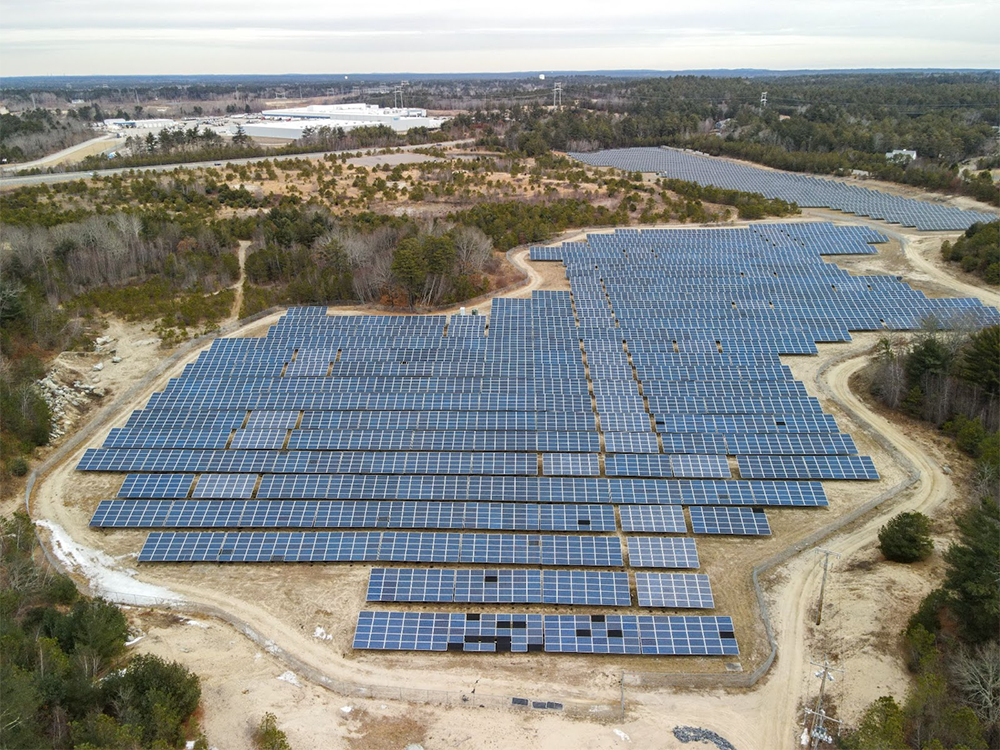Solar Siting Issues
Massachusetts communities and our environment are being harmed by inappropriate siting of large ground mounted industrial scale solar facilities, often accompanied by Battery Energy Storage Systems. Things need to change. CLWC supports solutions to the conflicts currently created when corporations, backed by state subsidies, programs and policies, want to destroy our lands and waters for industrial scale projects.
Change state Zoning laws favor the solar industry and harm local communities
CLWC has been raising awareness about the issues involved in cutting down forests for large solar since at leas 2017 when we issue a report that is here. An outdated section of the state Zoning Law is used by multinational corporations, many of them fossil fuel giants, as a weapon against municipalities when it comes to siting solar. Find out more about this issue and how to help change the law on our Blog here.
Keep solar off forests, farmland
CLWC supports the MassAudubon approach outlined in its 2023 report: Growing Solar, Protecting Nature.
Rooftop solar can provide 80% of US energy needs. According to the industry, it is “2x” as expensive to put solar on rooftops, parking lots and brownfields than it is to clear a forest for a large project. Should we sacrifice our forests and farmlands for the profits of big energy companies? Over 5,000 acres of forests in Massachusetts have been consumed by solar and another 100,000 acres are targeted. Why hasn’t the state done anything to stop this? Technical assistance and subsidies can be redirected to proper solar siting and away from the destructive siting practices we see now.
Agrovoltaics or dual use industrial solar on farmland – is a dangerous experiment. No science supports the idea that crops can grow productively under solar panels in Massachusetts. The state’s roll out of “dual use” solar is a disaster and plagued with misrepresentations by “farmers” who often cannot support the claims that they are growing crops under solar panels.
In March 2023, Meg Sheehan of CLWC and Fred Beddall, a farmer from Northampton MA gave this presentation to the Massachusetts Association of Conservation Commissions on issues with solar siting in Massachusetts. This included case studies of “farmers” creating water bodies for “floating solar.”
Redirect state solar subsidies
Financial subsidies paid under the Solar Massachusetts Renewable Target (SMART) Program incentivizes clear cutting forests for large ground mounted solar facilities of up to 50 acres. Sometimes there are several projects together resulting in clearing hundreds of acres of forest in the same area.
Small Wareham alone has lost approximately 400 acres of forest to ground-mounted solar arrays, at a time when we need to conserve our forests to combat climate change.
Be aware of the negative impacts of putting solar on forests, farmland
Large scale industrial solar facilities fragments and degrade natural habitats impacting wildlife and ecosystems. Forests protect and filter underground drinking water aquifers and removing them for solar threatens water supplies.

Other harms include removing soils and vegetation, which causes erosion, soil compaction, and changes in soil chemistry. This can have negative impacts on soil health and productivity, and lead to potential environmental disasters such as sediment runoff from a newly-cleared site into a local stream. There have been major erosions and flooding events from improperly designed and sited solar projects, including at a Blue Wave solar site in Sutton MA.
Planting pollinators or meadows under solar projects cannot make up for the loss of natural ecosystems.
Ensure proper decommissioning
Like any large-scale infrastructure project, ground-mounted solar arrays eventually reach the end of their useful life and need to be decommissioned. Proper decommissioning and disposal of solar panels and other components is important to minimize negative environmental impacts. The United States currently does not have a plan for the millions of tons of solid waste that will be generated when current solar arrays reach their end of life. Recycling of solar arrays will only rescue a small percentage of the existing panels from landfills. Municipalities are taking steps to ensure they are not liable for the solid waste generated at the end of a solar array’s lifespan.
Prevent all impacts to Indigenous Native American sites
Improperly sited solar arrays also destroy Indigenous heritage. In 2016, Borrego Solar desecrated the historic King Philip’s Cave site in Freetown MA and is responsible for other sites. The BlueWave solar project on prime agricultural land on the Connecticut River in Northfield MA will desecrate an area with 5 known Indigenous sites.
